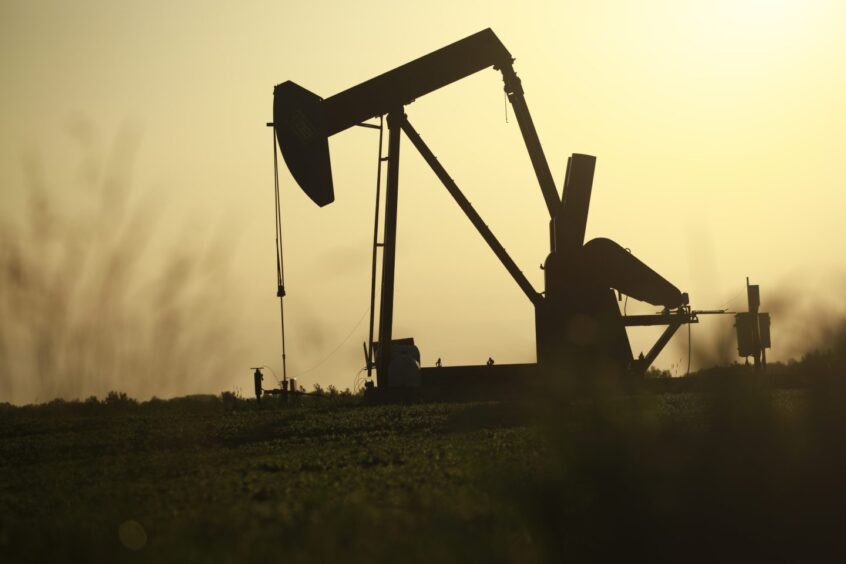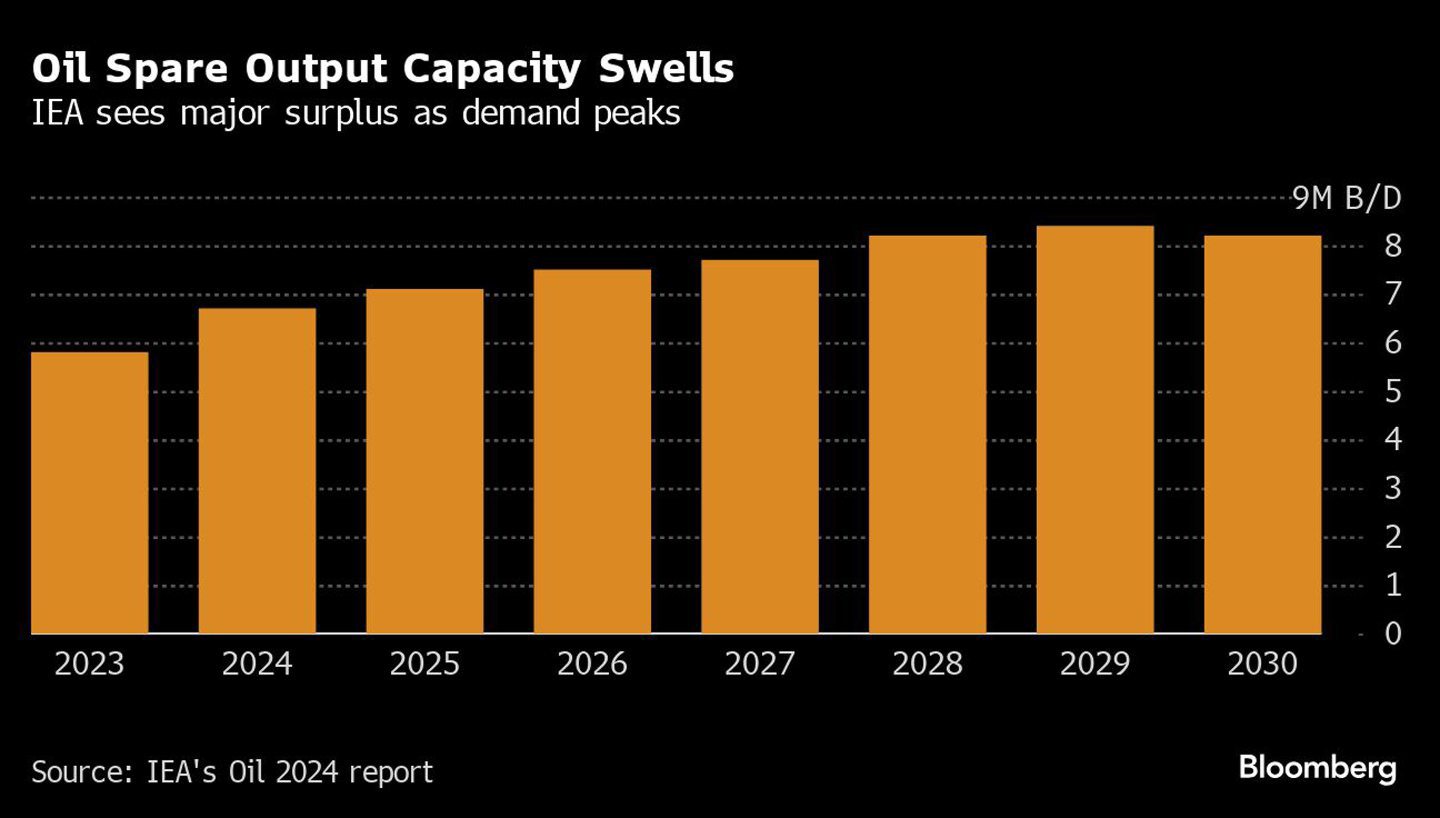
Global oil markets face a “major” surplus this decade as the shift away from fossil fuels causes demand to hit a plateau amid plentiful supply growth, the International Energy Agency said.
World consumption will “level off” at 105.6 million barrels a day in 2029, about 4% higher than last year’s level, amid surging sales of electric vehicles and improved fuel efficiency, the Paris-based policy adviser said in its annual medium-term outlook.
Meanwhile, oil production capacity continues to surge. Led by the US, it will be a “staggering” 8 million barrels a day higher than demand by the end of the decade, leaving the biggest buffer of spare output since the depths of the Covid-19 lockdowns.
“As the pandemic rebound loses steam, clean energy transitions advance, and the structure of China’s economy shifts, growth in global oil demand is slowing down,” said Fatih Birol, the IEA’s executive director. “Rising oil supplies could potentially weigh on prices through the end of the decade.”
International oil prices have traded near $80 a barrel this year as robust demand, conflict in the Middle East and supply restraint by OPEC+ are countered by a flood of new output from the Americas and concerns over China’s economic growth.
World oil consumption will continue to expand for several years, adding about 4 million barrels a day by the end of the decade amid economic expansion in India and China, and growing use by the aviation and petrochemical industries, the IEA said.
But use of the commodity will continue its “decades-long decline” in developed economies, sinking from last year’s 46 million barrels a day to 43 million a day by 2030 — the lowest level since 1991. Even Chinese demand will plateau by the end of the decade at about 18 million barrels a day, according to the report.
“Oil companies may want to make sure their business strategies and plans are prepared,” Birol said.
Majors such as BP Plc and Shell Plc have tempered plans to diversify from hydrocarbons into renewable energy, while others like Exxon Mobil Corp. remain solidly focused on oil and gas.
Patchy Record
In the past, some of the IEA’s predictions have gone astray.
A decade ago, the agency repeatedly warned of a looming oil supply “crunch” that never materialized as America’s shale boom shattered expectations. In 2022 it forecast an immediate collapse in Russian output that also didn’t occur, and in recent months has revised demand projections for 2024 both down and up.
In a separate monthly report also released on Wednesday, the agency lowered consumption projections for this year by 100,000 barrels a day to 960,000 barrels a day. “Flagging oil demand growth and inventory builds” point to a “comfortably-supplied market,” it said.
One risk to the IEA’s forecast is if the transition to clean energy is slower than expected. In a separate report on Wednesday, BloombergNEF slashed its sales estimates for electric vehicles and warned that the auto industry is falling off the track toward decarbonization.
US Republican leaders criticized the IEA’s projections in a letter in March, claiming its forecasts have been clouded by pressures to fulfill climate change goals. The IEA has said that investment in new oil and gas projects would need to stop in order to comply with the target of net zero carbon emissions by 2050.
Growth in new oil supplies outside the Organization of Petroleum Exporting Countries and its partners will overtake demand as soon as next year, according to the report.
Producers across the Americas led by the US will add about 4.8 million barrels a day of capacity this decade, eclipsing the growth in consumption. The US will account for 2.1 million barrels of the expansion, with the remainder provided by Argentina, Brazil, Canada and Guyana. Even more could come onstream if tentative projects are approved. About 45% of the global capacity expansion will come from natural gas liquids and condensates.
This tide of new oil stands to erode the market share of the OPEC+ alliance led by Saudi Arabia and Russia. Last weekend, the 22-nation group announced a plan for reviving halted supplies later this year, but has signaled that the hike could be postponed. Earlier this year, the Saudis paused plans for a major expansion in its production capacity.
Recommended for you

 © Supplied by Bloomberg
© Supplied by Bloomberg